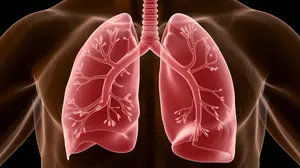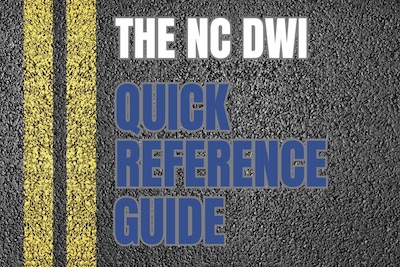Portable Breath Test FAQs: The Science Behind PBT Alcohol Screening Devices
 These FAQs explore the calibration procedures, recordkeeping, and the scientific principles behind breath alcohol testing and PBT Portable Breath Tests in North Carolina. It addresses questions about alveolar breath, Henry’s Law, and why sensors drift, along with references to 10A NCAC 41B and the role of the Forensic Tests for Alcohol Branch. We cover the foundations of how breath tests measure ethanol in “deep lung” air and why monthly checks matter.
These FAQs explore the calibration procedures, recordkeeping, and the scientific principles behind breath alcohol testing and PBT Portable Breath Tests in North Carolina. It addresses questions about alveolar breath, Henry’s Law, and why sensors drift, along with references to 10A NCAC 41B and the role of the Forensic Tests for Alcohol Branch. We cover the foundations of how breath tests measure ethanol in “deep lung” air and why monthly checks matter.
If you have questions about a specific legal case, please call or text the Powers Law Firm at 704-342-4357, or email Bill Powers at Bill@CarolinaAttorneys.com. Understanding the science and administrative rules can help you see how a reported BAC might be subject to challenge during a pretrial motion to suppress, relative to probable cause to arrest.
Portable breath tests (PBTs) attempt to measure alcohol in alveolar breath, which is air from the deepest parts of the lungs. This deep-lung air sample contains a more consistent ethanol concentration than mouth air. When the test subject exhales, the final portion of the breath sample is considered most representative of the bloodstream alcohol level and true BAC Blood Alcohol Content or Concentration.
Henry’s Law helps explain why breath ethanol corresponds to blood ethanol. In a simplified sense, Henry’s Law states that the concentration of a volatile compound (like ethanol) dissolved in a liquid (blood) is proportional to its partial pressure in a gas phase (exhaled air), at a given temperature. Because the lungs facilitate gas exchange at roughly constant body temperature (98.6 °F), alveolar air should correlate with blood levels.
By drawing a sample from alveolar air, PBT devices attempt to gauge a driver’s approximate BAC. Mouth alcohol, which may come from recent drinks or residual ethanol in the mouth from other sources (and even burping or belching), can produce misleading numbers, so officers are encouraged to check that the driver does not have gum or other objects in the mouth and has not recently eaten or recently consumed alcohol before administering the breath test.
The alveolar partition ratio (sometimes called the blood-to-breath ratio) in humans for ethanol is often referenced to be 2100:1. That means approximately 2,100 milliliters of alveolar breath contain approximately the same amount of ethanol as 1 milliliter of blood, under typical conditions. However, the ratio can vary between people and may fluctuate due to temperature, breathing patterns, and individual physiology.
Even minor variations in this ratio can affect the final breath reading. Devices that assume a fixed ratio (like 2,100:1) rely on averages. If a person’s ratio is lower or higher, the measured BrAC (Breath Alcohol Concentration) may not perfectly match the actual blood alcohol content (BAC). This is one reason why DUI defense lawyers point out that breath tests are estimates rather than absolute measurements. The most accurate method to confirm the true BAC is a venous sample of the blood and GC-MS testing. Gas chromatography-mass spectrometry (GC-MS) is an analytical process that couples gas chromatography with mass spectrometry to separate different substances in a mixture and then detect or identify each one based on its mass-to-charge ratio.
Many PBTs use fuel cell sensors, while some larger evidentiary instruments utilize infrared (IR) spectroscopy or a combination of both.
- Fuel Cell: A small platinum-containing cell reacts chemically with ethanol in exhaled breath. Over time, repeated exposures and temperature changes can shift the sensor’s baseline, requiring periodic calibration. Physical wear, contamination, or residue can cause “drift,” where the cell reports values higher or lower than the actual ethanol concentration.
- Infrared (IR) Sensors: Approved BAC evidentiary devices often employ IR beams to detect ethanol molecules. Though IR can be more precise under controlled conditions, it still needs periodic checks, as optical components may degrade, or the filter system can shift.
Because PBT devices are typically compact and battery-powered, they frequently rely on fuel cell technology. Fuel cells are sensitive to temperature, residual chemicals, and mechanical jostling. Agencies must verify monthly that the reading remains within an acceptable range of a known ethanol standard. If logs show no check for several weeks, a defense lawyer might claim the sensor drifted and the reading is questionable.
Henry’s Law states that the concentration of a gas dissolved in a liquid is proportional to its partial pressure above that liquid, at a constant temperature. In breath testing:
- Ethanol circulates in the blood.
- The lungs exchange gases (oxygen, carbon dioxide) and allow ethanol vapors to emerge in exhaled breath.
- If body temperature stays about 98.6 °F, the partial pressure of ethanol in alveolar air can correlate to the blood alcohol concentration (BAC).
Because alveolar air is a key sampling point, PBTs and evidentiary machines rely on Henry’s Law to estimate how much ethanol is in the bloodstream. The alveolar partition ratio is effectively a numerical representation of Henry’s Law in the human body, assuming consistent temperature and normal respiratory function. Deviations in temperature or lung function can affect the reading.
Under 10A NCAC 41B .0503, approved alcohol screening devices must have their accuracy verified at least once every 30 days when in active use. Two primary methods are recognized:
- Alcoholic Breath Simulator
- Heats an ethanol-water solution to a known temperature (commonly 34 °C), releasing a vapor with a predictable ethanol concentration.
- The operator compares the device reading against that known concentration. If the device’s reading is off by more than a small margin, the operator is directed to remove the unit from service.
- Ethanol Gas Canister
- Delivers a controlled vapor with a labeled concentration.
- The device (ordinarily the Intoximeter EC/IR II in North Carolina) reading must match the known value within tolerance limits, and the canister must not be used beyond its expiration date.
Logs should show the date, result, and any actions taken if the device was out of range. Changing the simulator solution every 30 days (or 25 uses) and monitoring canister dates help keep each device aligned with expected values.
PBT Test Canister Logs in North Carolina document each calibration check, along with canister expirations and simulator solution changes. Paragraph (e) of 10A NCAC 41B .0503 sets forth the Forensic Tests for Alcohol Branch designs the ethanol gas canister log and maintained by the user agency (police departments, sheriff’s departments, and other law enforcement agencies such as the North Carolina State Highway Patrol). A typical log entry shows:
- The date and time of verification.
- The device’s serial number.
- The simulator solution lot number or canister ID, plus an expiration date if using a gas canister.
- The result of the check (did the device match the known value?).
- The operator’s name or initials.
These PBT test canister logs may serve as evidence that the device was checked within the required 30-day window and that the simulator solution or canister was not expired. If an agency does not keep logs, or if entries are missing, that can result in defense counsel challenging the PBT results in a contested matter.
North Carolina’s Administrative Code does not explicitly require advanced certifications for every officer, but best practices include training on:
- Proper Use of Simulators: Understanding how temperature control, ethanol concentration, and solution changes work.
- Gas Canister Management: Tracking expiration dates, recording usage, and ensuring the canister is connected correctly.
- Fuel Cell or Sensor Basics: Recognizing when a sensor might be contaminated or drifting.
Some training comes from manufacturer instructions for each device, while the Forensic Tests for Alcohol Branch may periodically provide updates and approve additional PBT devices. Failure to follow the recommended steps and testing protocols can produce a questionable result, which might be scrutinized if the portable breath test device leads to an arrest or influences an investigation.
Sometimes. If a defense attorney disputes the accuracy of a roadside reading, that attorney may request the calibration logs and details on how the device was maintained. A demonstration that the device was not checked for 45 days, or that the canister was used past its expiration, may cast doubt on the reading.
Unfortunately, regarding criminal charges with original jurisdiction in District Court in North Carolina, there is no traditional right to discovery.
Courts may address whether the device complied with 10A NCAC 41B .0503. Missing or incomplete entries can undermine the state’s position that the screening was conducted appropriately. While the numeric result from a PBT often is not used at trial to prove a specific BAC, as a practical matter it regularly factors into probable cause to arrest in DUI charges. If the reading is shown to be unreliable, an officer’s grounds for arrest might be weakened.
In North Carolina District Court—where misdemeanor charges (including DUI charges) generally begin—there is no statutorily mandated discovery process like the one applied to felonies in Superior Court. The North Carolina Criminal Procedure Act (Article 48, Chapter 15A) spells out discovery obligations primarily for cases within Superior Court original jurisdiction, including indicted felonies. Misdemeanor matters in District Court, lacking formal indictment or transfer to Superior Court with related felony charges, do not automatically trigger those same provisions.
This principle can be traced to N.C. Gen. Stat. §§ 15A-901 through 15A-910, which outline discovery procedures but focus on felony prosecutions and cases where the State proceeds by a True Bill of Indictment. In District Court, prosecutors sometimes voluntarily disclose material, or they may follow local “open-file” policies, but there is no comprehensive, statutory “right to discovery” as in felonies. Constitutional mandates (like Brady v. Maryland requirements to disclose exculpatory evidence) still apply, but they do not create a blanket discovery process in misdemeanor District Court.
PBT sensors assume the breath sample is at or near body temperature and that alveolar air is consistent. A cooler sample can reduce ethanol vapor, while a warmer sample might enhance it.
If the driver hyperventilates, holds their breath, burps, belches, coughs or suffers from GERD, the exhaled vapor might differ from typical alveolar air.
Gastroesophageal reflux disease (GERD) is a digestive problem in which stomach fluids rise into the esophagus. Because Henry’s Law depends on temperature, a shift of even one or two degrees Fahrenheit can affect partial pressure. Some PBTs have temperature detection features, but they still rely on monthly calibration to better ensure the sensor reads accurately. In real-world scenarios, variations in how a driver exhales can result in relevant variances to BrAC and reported BAC. That is another reason the North Carolina administrative code calls for an observation period and repeated tests if the readings are inconsistent.
Powers Law Firm: DWI Defense Lawyers
 North Carolina’s PBT calibration protocols, monthly checks, and scientific underpinnings—such as alveolar breath sampling and Henry’s Law—create a structured approach to roadside testing. Even so, sensors can drift, and logs can have gaps in some instances, potentially calling into question the reliability of PBT results. DUI defense lawyers may review whether the reported BrAC truly reflects the driver’s bloodstream ethanol concentration or blood alcohol content (BAC) to determine if the device was out of sync.
North Carolina’s PBT calibration protocols, monthly checks, and scientific underpinnings—such as alveolar breath sampling and Henry’s Law—create a structured approach to roadside testing. Even so, sensors can drift, and logs can have gaps in some instances, potentially calling into question the reliability of PBT results. DUI defense lawyers may review whether the reported BrAC truly reflects the driver’s bloodstream ethanol concentration or blood alcohol content (BAC) to determine if the device was out of sync.
If you want more information on how calibration and recordkeeping might influence a particular legal case, call or text the Powers Law Firm at 704-342-4357, or email Bill Powers at Bill@CarolinaAttorneys.com. Alveolar air measurements, partial pressure considerations, and monthly log entries can all play a role in determining the validity of a breath reading. Careful consideration of the underlying science can potentially influence whether a positive PBT test should be admissible as evidence.
 Powers Law Firm PA Home
Powers Law Firm PA Home



















